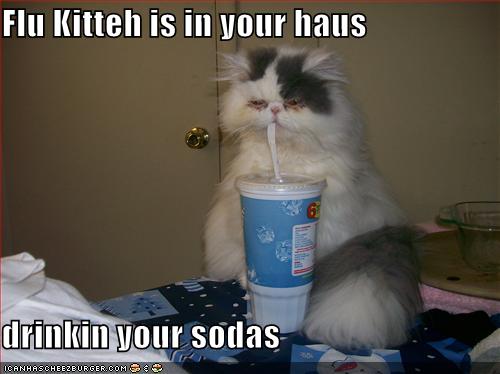Tone: In Literature, is writer’s or speaker’s attitude toward the subject, the reader, or herself or himself.
l May affect the mood/attitude of the poem
l Described in “emotion”
l An effect created by the author’s choices in techniques such as diction, syntax, and figurative language)
Ex: “Hooray! I’m going to get an ice cream” seems happier than “How horrible is it for me to get an ice cream!”
Voice: Speaker/Narrator’s PERSONALITY toward life, the world in general- may change if the character is “dynamic” (has double mind) but doesn’t change often.
l Discussed in terms of character
l An effect created by the author’s choices in techniques such as diction, syntax, and figurative language)
l In order to identify the voice, ask this question to yourself, “What kind of person does the narrator sound like?”
l The voice may be comic or tense
Style: Language conventions used to construct the story. Author’s “written personality”
(It does not reflect their own human beings, however.)
l toward life, the world in general- may change if the character is “dynamic” (has double mind) but doesn’t change often.
l Described in terms of character
l An effect created by the author’s choices in techniques such as diction, syntax, and figurative language)
Musical Device
Poet uses sound word
Alliteration: The repetition of initial consonant sounds.
Ex: Tried and true. First and Foremost
Assonance: The repetition of vowel sounds.
Ex: Free and easy.
Consonance: The repetition of final consonant sounds.
Ex: Short and Sweet. Odds and Ends. First and Last.
Approximate Rhymes (or Slant rhymes): Words with any kind of sound similarity, from close to fairly remote.
Sound and Meaning
Rhythm and sound cooperate to produce the music of poetry
Onomatopoeia: Use of words which, at least supposedly, sound like what they mean.
The video below shows the examples of Onomatopoeia.
Phonetic Intensives: Who sound, by a process as yet obscure, to some degree connects with their meaning.
Ex: Flame, Flare, Flash, Ficker, Flimmer. (Has initial fl sound)
You may choose to create effect that is
Euphonious: Smooth and pleasant sounding
Cacophonous: Rough and harsh sounding.
Synesthesia: The stimulation of two or more senses simultaneously.
Ex: “Blue” and “Buzz”
Pattern
Structure: The arrangement of ideas, images, thoughts, sentences
Form: External pattern on a poem
There are three broad kinds of forms
1) Continuous: The element is slight; lines follow each other without formal grouping, the only breaks being dictated by units of meaning, as paragraphs are in prose.
2) Stanzaic form: In a series of stanzas (repeated units having the same number of lines), usually the same metrical pattern.
l Designated into 4 things
- The rhyme scheme (If there is one)
- The position of the refrain (If there is one)
- The prevailing metrical foot
- The number of feet in each line
3) Fixed Form: The traditional pattern that applies to a whole poem
n Limerick: Serves to illustrate the fiexed form in general. Pattern: aa^3 bb^2 a^3. Used often for humorous and nonsense verse (short lines, swift catchy meter, and emphatic rhymes) n Sonnet: 14 lines in length and almost always iambic pentameter.
- Italain (Petrarchan) Sonnet: Usually devided between 8 lines (Octave), using two rhymes arranged abbaabba, and 6 lines (sestet) using arrangement of either 2 or 3 rhymes: Common ones are cdcdcd and cdeecde
- English (Shakespearean) Sonnet: Three quatrains and a concluding coplet, rhyming abab cdcd efef gg.
n Villanelle: Only requires 2 rhyme sounds. (19 lines are divided into five three-line stanzas (tercets) and a four line concluding quatrain)
- 1st and 3rd of the first stanzas serve as refrain lines entwined with the rhyme pattern (The first line repeated at the ends of the second and the fourth stanzas- the third repeated at the ends of the third and fifth stanza)
- Concluding Stanza: refrains are repeated as line 18 and 19.
The pattern is A^1 Ba^2 abA^1 abA^2 abA^1 abA^2 abA^1A^2
Evaluating Poem
To judge poems, ask these three questions:
1) What is its central purpose?
-Needed to understand the poem
2) How fully has this purpose been accomplished?
-Judges the poem on a scale of perfection
3) How important is this purpose?
-Judges the poem on a scale of significance
In order for poem to be excellent, its combination of emotion, language, thought, and sound must be fresh and original.
3 ways in which a poem can fail to receive excellence.
1) Sentimentality: Indulgence in emotion for its own sake, or expression of more emotion than an occasion warrants. “Tear-jerking” literature, aiming primarily at stimulating the emotions directly rather than at communicating experience truly and freshly. Depends on trite and well tried formulas for exciting emotion.
2) Rhetorical: Uses a language more glittering and high flown than its substance warrants. Offers language that is without a corresponding reality of emotion or thought underneath. Often superficial and trite.
3) Didactic: Has a primary purpose to teach or preach, communicating information or moral instruction only.
CAUTION to student: When making a judgment, be honest
Connections between this material and my own experience: When i was in 6th grade, my english teacher first introdced me to literary terms. Since i had only stayed in Amrica for 2 years that time, i had no ide what in the world she was talking about. My english teacher was very excited to teach me, however. She told me that it was her duty to make sure that every students in her class learn the english successfully. She taught me the words such as "style". She said that "style" was author's feelings or emotions toward the world or life. She also stated that authors often show one's "style" by using different word choices. In order to make sure that I understand this concept, she held an activity for our class, which was to write a short story about a slave girl back in 1600s. I, a 6th grader who wanted justice and freedom, immediately wrote a story about a slave girl named Jenny. i expressd my opinons of slavery in a form of Jenny. She, like me, wanted to be free, do anything, and to have fun. However, since she could not do that for she was slave. She was extremely mad about that; why couldn't she go to same school as her white friend who lived beside her? Why do white people treat her cruely? But Jenny was a sweet girl. She believed that only few people were mean, that there were many people who were like angels, kind. She viewed the world a great place to live. That's what i think about it, too. By Jenny, i was able to express my opinons about life. My 8th english teacher prasised my work in front of my classroom. Now whenever i have to write short stories, i will always think of Jenny
Works Cited
(P.S: I'm sorry if there are unnessary terms that i have listed. I missed one day of school and i feel that i missed the Mrs.Holmes listing the terms that we didn't have to discuss in this class note)
.jpg)







